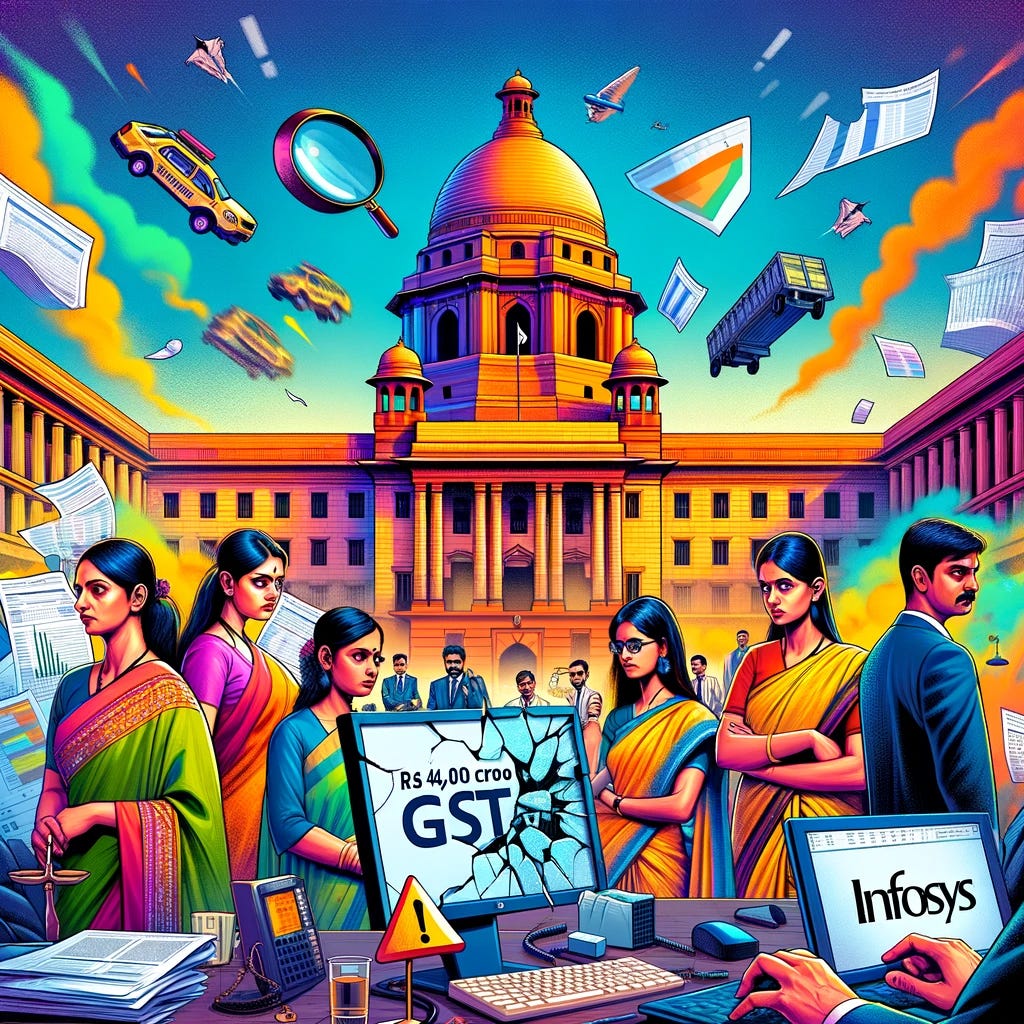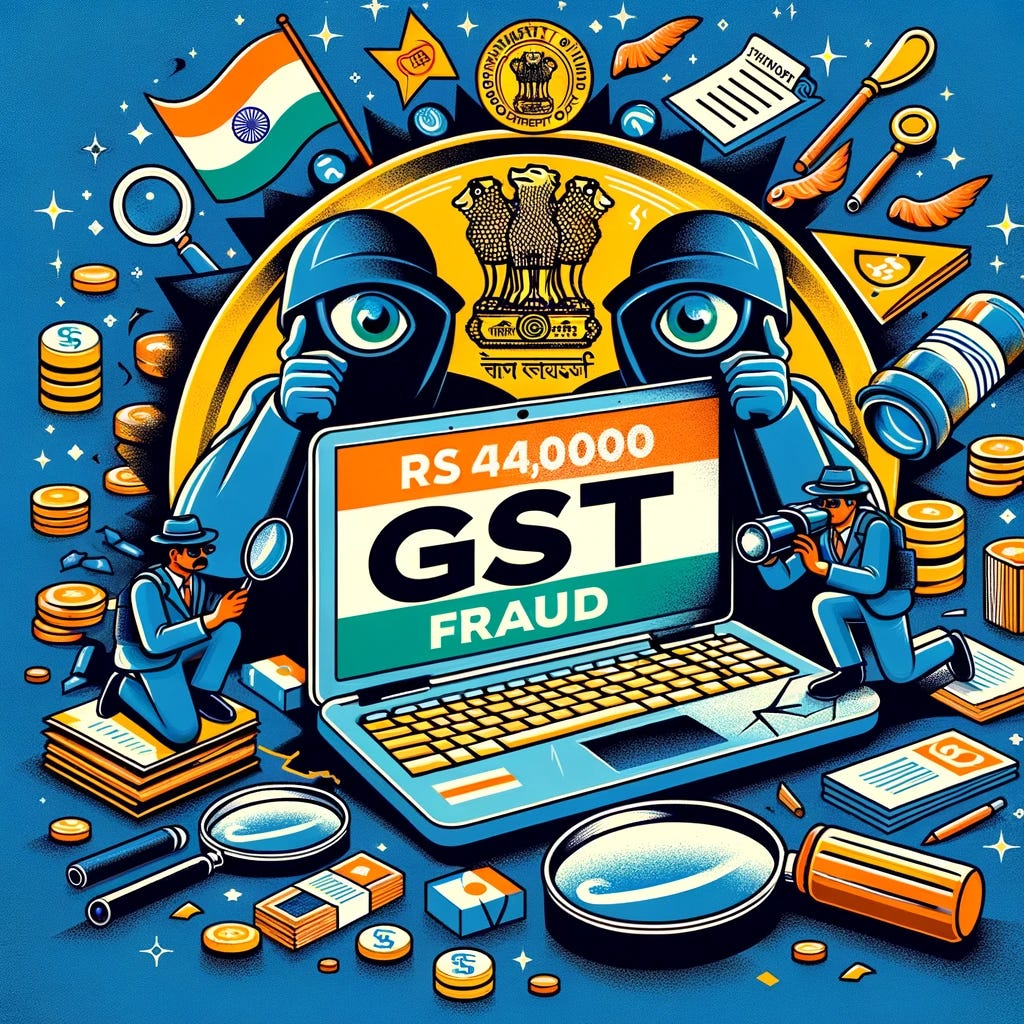Rs 44,000 Crore GST Fraud: How did Infosys's Software Allow this Systemic Daylight Robbery?
The Central Board of Indirect Taxes and Customs (CBIC) should not present this as an accomplishment but rather recognize it as an admission of a glaring systemic deficiency.
Systemic Failure Acknowledged by GST Department
The GST Department, under the Ministry of Finance, through a Press Information Bureau (PIB) press note dated 7th January, announced the unearthing of fake Input Tax Credit (ITC) claims amounting to a staggering Rs 44,000 crore. Far from being touted as an achievement, this revelation points towards a deep-rooted systemic failure. The ability of fraudsters to exploit such a significant loophole indicates a grave concern that demands immediate attention and thorough rectification.
The Loophole in GST Software
The central issue rests on the susceptibility of the GST software system, which seems to have permitted fictitious credits similar to deceptive banking activities. Consider the virtual impossibility of introducing fake fund credit into your bank account; banks implement stringent and foolproof measures to prevent such occurrences. When juxtaposed with the banking sector's stringent anti-fraud protocols, the vulnerabilities in the GST system become starkly apparent. This situation doesn't illustrate the vigilance of the GST department but rather exposes significant deficiencies in the system's security and validation protocols. It is a clear indicator that the system is critically flawed and requires an immediate, comprehensive overhaul to prevent such exploitations in the future.
Unveiling the Scale of GST Malpractice
The exposure of fake Input Tax Credit (ITC) claims transcends mere numerical data; it underscores a serious abuse of the GST framework. With 29,273 identified fraudulent entities, a staggering Rs. 44,015 crore evasion has been unearthed. Such a revelation doesn't merely dent revenue; it strikes at the heart of the tax system's credibility, designed to enhance efficiency and simplicity. The enormity of these frauds, coupled with the Rs. 4,646 crore safeguarded through diligent blocking and recovery efforts, underscores the urgent necessity for a systemic overhaul. Of the detected evasion, Rs. 3,802 crore was saved by blocking ITC and Rs. 844 crore through recovery – a recoverable amount that is alarmingly low in proportion to the suspected evasion. The 121 arrests made so far reflect the extensive and severe nature of these white-collar crimes, yet they also highlight the audacity with which fraudsters infiltrate and exploit the system, revealing a profound need for stringent reform.
In the recent quarter ending December 2023, an additional 4,153 bogus firms were identified, involving suspected ITC evasion of Rs. 12,036 crore. Notably, the Central GST Authorities detected 2,358 of these firms, thereby safeguarding revenue amounting to Rs. 1,317 crore. However, the fact that 41 individuals were arrested in these cases further underscores the persistent and pervasive challenge of tax fraud, emphasizing the urgent need for strengthened measures and systemic reforms to ensure the integrity and efficacy of the GST system.
Comparison with Income Tax Department's Robust System
Reflecting on the pre-digital era of manual TDS certificates in the Income Tax department, one recalls the rampant TDS frauds. However, the transition to a computerized system significantly mitigated such issues. The current technology verifies credits meticulously, leaving no room for forgery. The apparent omission of similar rigorous checks in the Infosys-developed GST software from its inception in 2017 is alarming. The Central Economic Intelligence Committee (CEIC) under the Ministry of Finance should prioritize addressing these shortcomings over mere statistical achievements.
Transitioning to GST 2.0
As Infosys' contract for GST technology support nears its end in September 2024, the GST Network (GSTN) is on the lookout for a new service provider to usher in GST 2.0. This transition period presents an opportune moment to address and rectify the existing vulnerabilities. There should be a focus on enhancing cross-system connectivity and automated information sharing between the GST and Income Tax departments. Such integration is essential for a more coherent and fraud-resistant system.
Embracing Technology for a Foolproof System
With advancements in technology, particularly in artificial intelligence, there's a significant opportunity to bolster the GST system's integrity. The system should be engineered to prevent rudimentary frauds and be equipped with mechanisms to detect fake firms, ideally in an automated and proactive manner. Linking with the Registrar of Companies (RoC) and establishing a two-way link with the Income Tax department are critical steps. As the Indian economy grows and the tax base widens, the systems for both Income Tax and GST must not only become more robust but also smarter and tamper-proof. Such enhancements are crucial to safeguard legitimate revenues and support India's ambitious vision for a prosperous future, epitomized by PM Narendra Modi’s “Viksat Bharat 2047” Mission.
Summing Up
In summary, while the detection of Rs 44,000 crore in fraudulent ITC claims may initially seem like a victory against tax evasion, it indeed highlights significant weaknesses in the current GST system. The time is ripe for the Central Board of Indirect Taxes and Customs (CBIC) to initiate and implement a comprehensive overhaul, leveraging technology to prevent future frauds and to build a more robust, integrated, and intelligent tax system in line with India's growth trajectory.







